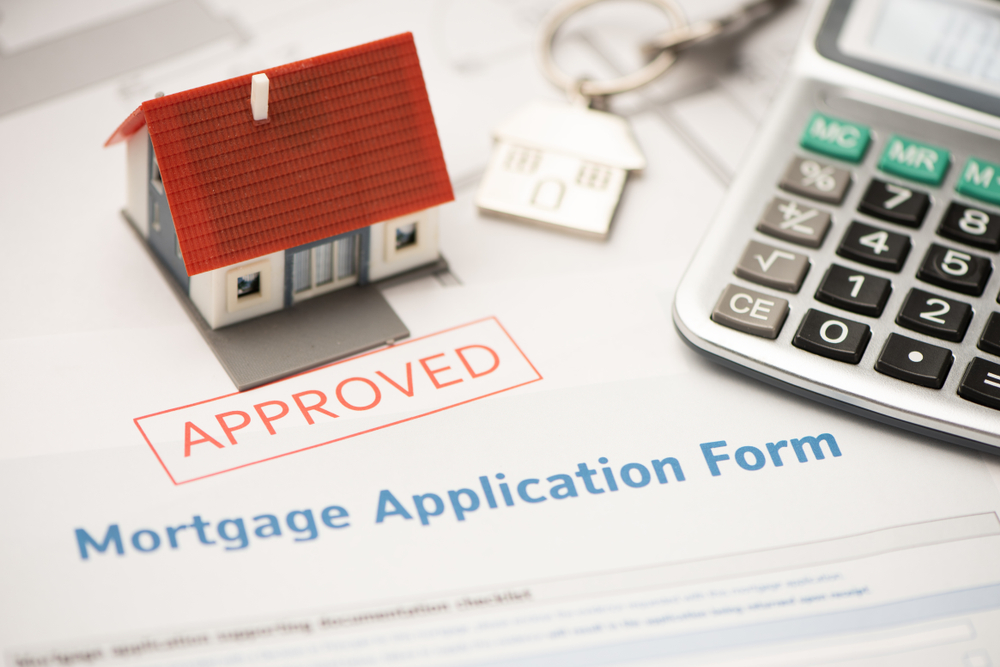Buying a home is an exciting yet complicated process that requires careful planning and preparation. One of the most important steps for hopeful homebuyers is obtaining pre-approval for a mortgage from a lender. Going through the pre-approval process early on in your home search can make your bidding more competitive, help you better understand your budget and price range, and streamline the home buying journey by getting some paperwork out of the way ahead of time.
As one of the leaders in the mortgage and real estate industry, Realoq understands the significance of mortgage pre-approval for homebuyers. We have put together this comprehensive guide to walk you through what pre-approval is, why it matters, what you need to provide for pre-approval, the step-by-step process, and tips for choosing the right lender and loan program. Equipped with this knowledge, you’ll be able to navigate the pre-approval process with confidence and get a head start on making your homeownership dreams come true.
Clarify Your Budget Constraints
One of the most useful outcomes of going through the pre-approval process is gaining clarity on your budget constraints. Your lender will assess important financial factors like your income, assets, debts, credit score and history in order to determine the loan amount you qualify for. This helps establish a realistic price range for your home search so you don’t waste time looking at listings you can’t reasonably afford or get your heart set on a dream home that’s financially out of reach.
Through pre-approval, you’ll also get estimates for total monthly housing payments including principal, interest, taxes, insurance, HOA fees, and more. This allows you to accurately assess what you can comfortably budget for housing each month. Underestimating the true costs of homeownership is one of the most common mistakes for eager first-time home buyers. Pre-approval prevents sticker shock down the road.
Increase Your Buying Power
Sellers tend to take buyers who have already been pre-approved for a mortgage much more seriously. Pre-approval signals to sellers that you are a qualified, financially stable buyer with the backing of a lender. Your offer automatically seems more attractive and feasible to sellers when they know you are pre-approved for an amount that covers their listing price.
This can give you a marked competitive edge in bidding for that dream home, especially in high-demand seller’s markets. Sellers may also be more inclined to accept an offer from a financially vetted buyer or even negotiate on price if they believe you are truly ready to move forward. On the other hand, making offers without a pre-approval letter can seem like you’re wasting the seller’s time since you haven’t demonstrated financial readiness to purchase a home.
Streamline Your Home Buying Process
Since you’ve already gone through income and asset verification, credit checks, initial underwriting and more upfront, the remainder of the mortgage process from offer acceptance to closing moves much quicker compared to buyers who haven’t obtained pre-approval. This can be the key to success if you want to submit aggressive offers with short closing timelines. Sellers are more likely to accommodate fast closing requests from pre-approved buyers who won’t get held up by financing contingencies down the road.
Getting pre-approved eliminates frustrating surprises that delay closing at the last minute, like discovering new debts that torpedo your debt-to-income ratio or credit problems. You also won’t waste time applying and getting denied for mortgages you don’t actually qualify for. Essentially, pre-approval front loads the vetting process so the rest of the transaction can be expedited.
Financial and Emotional Preparation
Going through the pre-approval process reduces anxiety and sets realistic expectations that prepare you financially and emotionally for homeownership. You’ll have greater confidence making offers within a confirmed budget instead of guessing what you can afford.
Closing also becomes less stressful when there is assurance from both your lender and yourself that you are ready for this large financial commitment. This helps prevent post-purchase regret, desperation to sell, or even foreclosure. Ultimately, mortgage pre-approval allows you to embark on finding and financing your new home from an informed, empowered position.

Step-By-Step Mortgage Pre-Approval Process
Getting pre-qualified and pre-approved for a mortgage loan lays the groundwork for turning your homeownership dreams into reality. Here is a step-by-step overview of the process so you know what to expect.
Step 1: Understanding Your Credit Score and Financial Health
The first step is to check your credit score through one of the three main consumer credit bureaus – Equifax, Experian or TransUnion. This three-digit number assessing your creditworthiness ranges from 300 to 850. The higher your score, the better interest rates and loan terms you’ll qualify for. Most lenders require a minimum score between 620 to 640 for conventional mortgage approval.
Next, examine your full credit reports from each bureau to check for errors and get familiar with what aspects of your financial history a lender will evaluate to determine loan eligibility and risk, including:
- Payment history showing any late/missed payments
- Credit utilization or ratio of balances to limits
- Length of credit history and mix of credit types
- New credit applications and hard inquiries
Keep in mind that high utilization rates, a short or inconsistent history, and applying for new financing too frequently can negatively impact your score. If there are inaccuracies on your reports, dispute them immediately to improve your score.
You’ll also need a good debt-to-income ratio – ideally below 36%. This measures total recurring monthly debt payments relative to gross monthly income. The lower the DTI, the less financial risk for lenders. Pay down balances, avoid new loans that raise your DTI prior to the mortgage process.
Step 2: Gather Necessary Documentation
Be prepared to provide extensive documentation verifying your financial situation and assets including:
- Federal tax returns for past 2 years
- W2s and current pay stubs covering 1 month
- Bank/investment account statements for 2-3 months
- Records of any supplemental or rental income
- Retirement account balances
- Documentation of gift funds if applicable
- Driver’s license or other government-issued ID
Keeping your financial statements, tax paperwork, and other documents organized will streamline compiling everything a lender requires.
Step 3: Choosing the Right Lender
With your financial house in order, the next key step is finding the right lending partner. Factors to consider include:
- Approval Success Rates: Some specialize in applicants with unique situations
- Types of Loans Offered: Conventional, FHA, VA, USDA, etc.
- Closing Time Estimates: Can they meet tight deadlines?
- Interest Rates and Fees: Compare quoting apples-to-apples
- Ease of Process: Quick pre-approvals, responsive support
Getting proposals from 3 lenders makes sense for most borrowers without extremely complex situations. Be wary of over-applying as too many hard credit inquiries from lenders can impact your credit score.
Step 4: Completing the Application
Submit a completed loan application along with all required financial documentation to your selected lender(s). Be thorough and accurate in detailing incomes, assets, debts, and obligations to speed underwriting.
Double check that everything including employer names, account numbers, statement dates, loan terms, etc. match actual documents word-for-word to avoid issues or delays with verification.
Respond promptly to any additional requests from underwriters. Stay in close communication with your loan officer throughout the process to surface and resolve bottlenecks quickly.
Step 5: Evaluating and Comparing Pre-Approval Offers
Hopefully you’ll receive multiple pre-approval offers if you applied to several lenders. Now comes the fun part – determining which option makes the most financial sense for your situation. Compare:
- Pre-Approval Amounts: The higher the better
- Loan Types and Terms: Conventional vs. government-backed
- Interest Rates: The lower the better over life of loan
- Lender Fees: Origination, appraisal, credit report fees
- Discount Points: Pay now to lower long-term rates
- Ease and Speed of Process: Attentive and organized?
Crunching the numbers is crucial, but relationships and trust are also key. You want confidence your lending partner will shepherd the remainder of the transaction quickly and smoothly.
Weigh the pros and cons of each pre-approval offer based on both quantitative costs and qualitative factors. Then move forward with negotiating an offer armed with your committed financing.

Mortgage Pre-Approval Frequently Asked Questions
How long does pre-approval last?
Pre-approval letters are typically valid for 60-90 days. If you don’t enter an accepted purchase agreement by then, you’ll have to go through the process again and may get different terms.
Does pre-approval guarantee a mortgage?
No, pre-approval is not an absolute guarantee you’ll receive the mortgage as terms can still change. However, as long as your financial situation remains the same, it indicates you meet the requirements and are likely to get formal approval post-offer.
How does pre-approval affect credit score?
The hard inquiry from a lender may cause a small temporary drop in your score, but being pre-approved signals financial responsibility. Paying your mortgage diligently ultimately boosts your score.
Can I get pre-approved with a low credit score?
Each lender sets their own minimum score requirement, often around 620. With a lower score, look into FHA loans requiring 580 plus higher down payments and mortgage insurance.
What if I am denied pre-approval?
If you receive an outright denial, ask the lender for details on their decision. Identify opportunities to improve your financial profile by paying down debts or building credit history then reapply in 6 months or sooner. Also consider a housing counselor to create a plan to strengthen your application.
Get Pre-Approved through Realoq’s Partners
We hope this guide has shown why obtaining mortgage pre-approval is such a vital building block on the path to homeownership. Now that you understand the major benefits, required steps and answers to common questions, you’re ready to move forward.
The expert lending partners in Realoq’s network are ready to help analyze your financial situation, provide pre-approval options, and set you up for success securing the perfect home. We make the process smooth and simple by pairing you with the ideal lender match for your needs from our extensive trustworthy relationships.
Lean on Realoq’s real estate advisors to guide you through every milestone. Our agents know how critical pre-approval is and are with you every step of the way from preparing financials, comparing loans, placing winning offers, right up to the rewarding day you get your keys.
Don’t let the process intimidate you. Be bold and take the first step towards making your dreams a reality with the support of our team! Let’s connect today to start your pre-approval journey.


